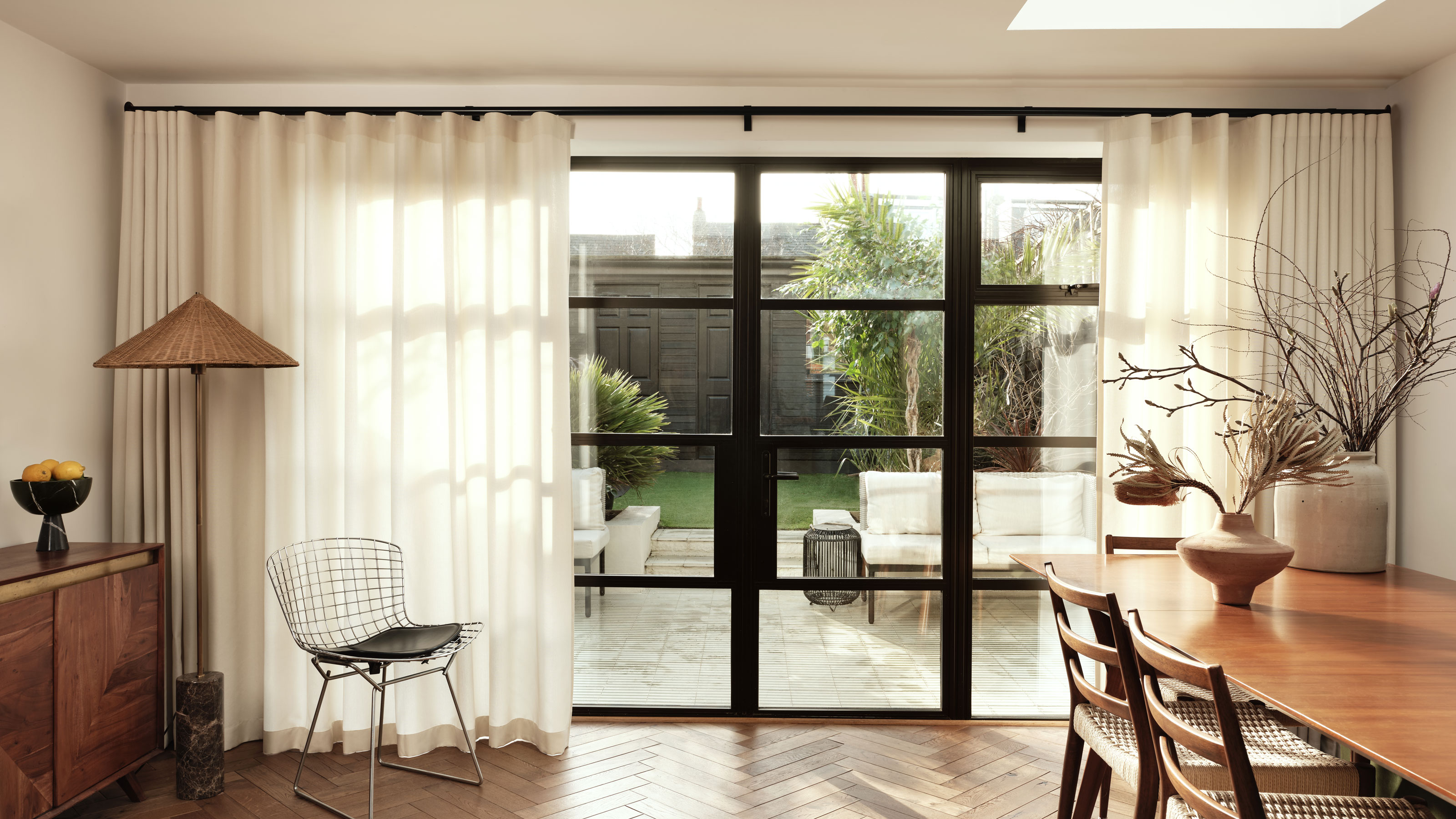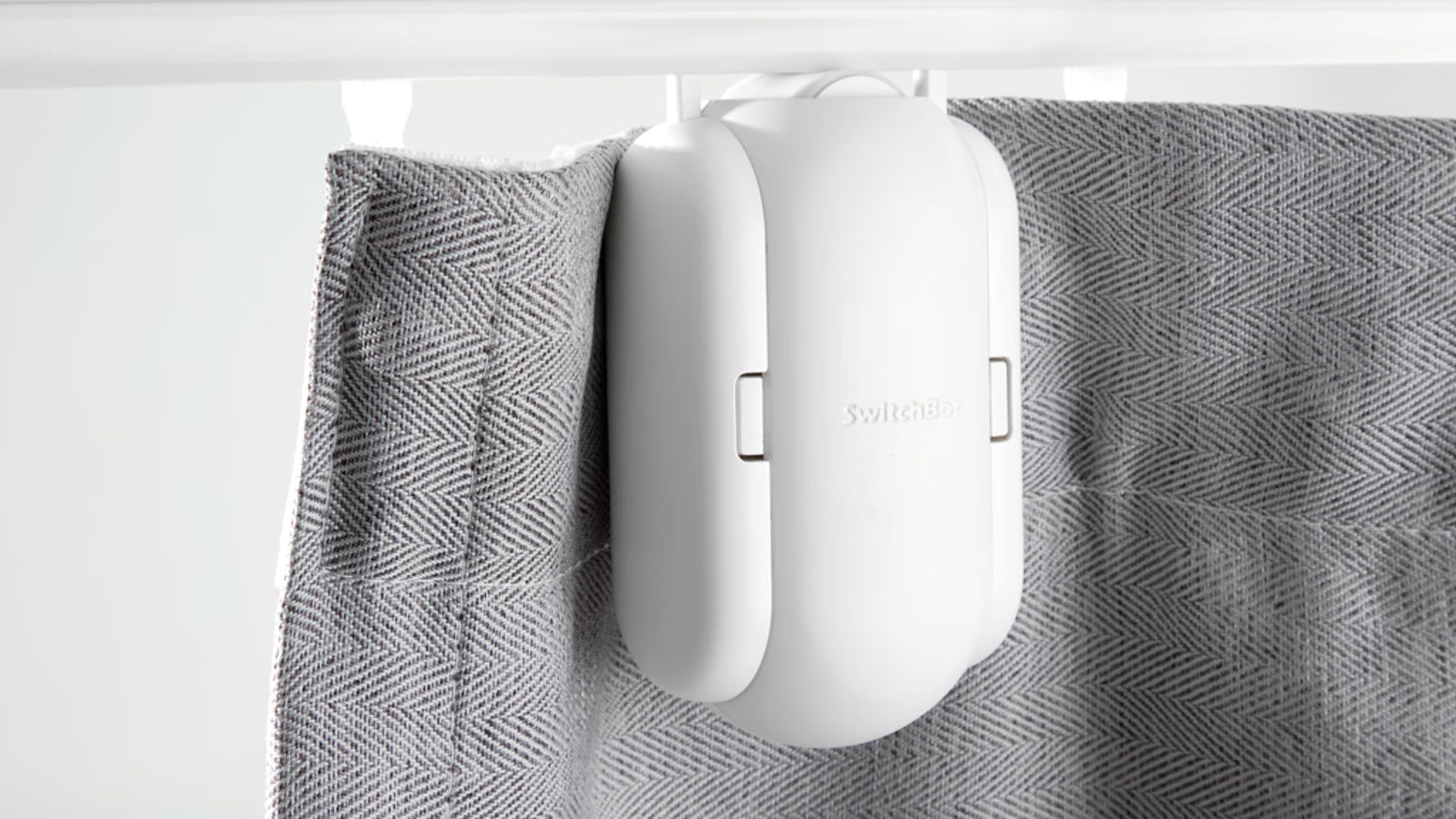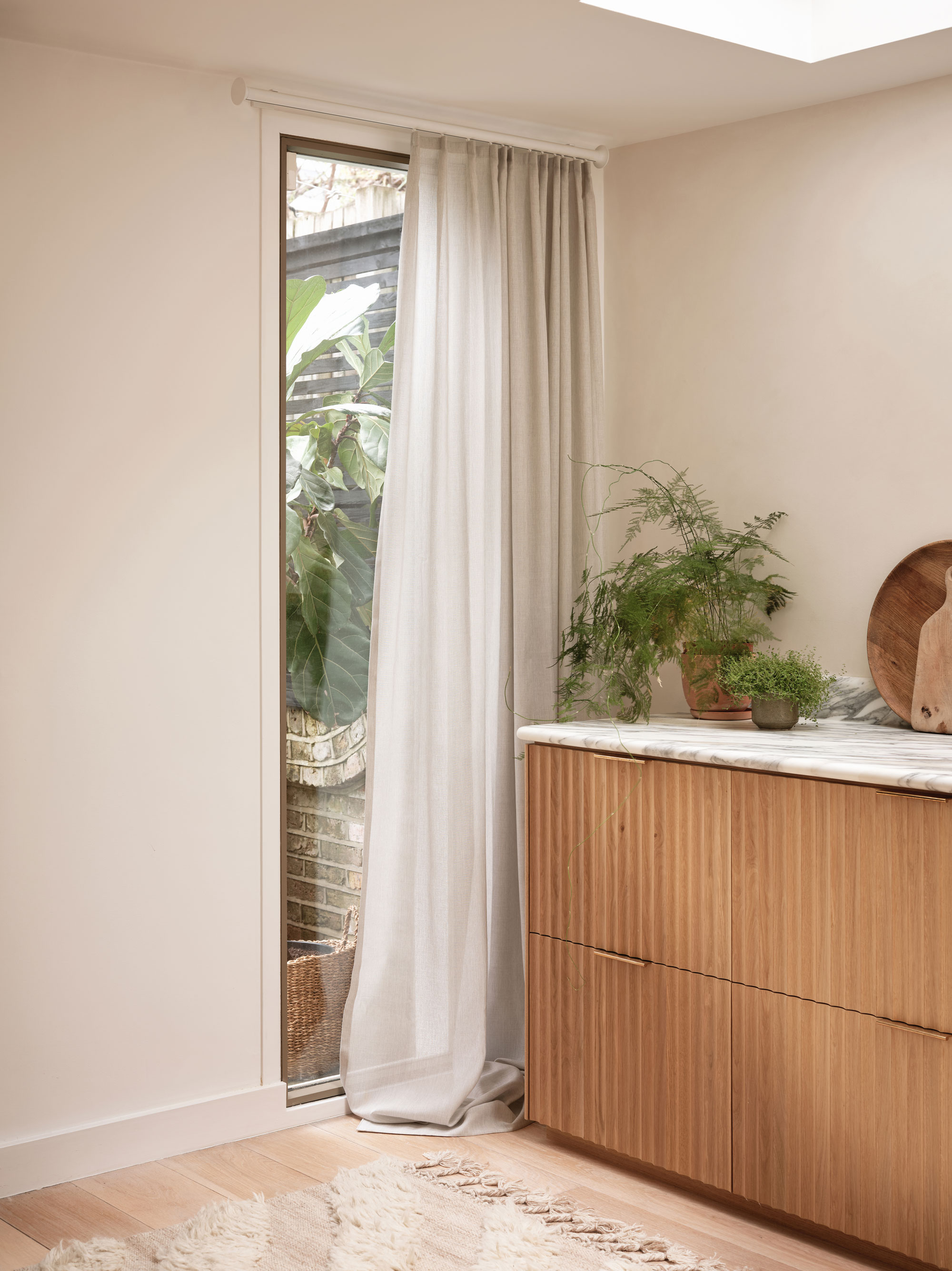Smart curtains – 6 things you need to know about automating your window treatments
A new generation of smart curtains means automated window treatments are within reach for everyone. Here's what you need to know about them


Smart curtains may seem like a bit of a novelty, but they have more benefits than you'd imagine. And, while once automating your curtains was a huge expense, so something explored in only the most luxurious homes, things have shifted as technological advances have increased.
'Electric curtains have been around since the 1960s and not a true lot has changed since then,' says Kaj Beetstra, a developer for smart window system Slide. 'To buy them you have to go to a specialized shop, they come over and measure the window length, the curtain track has to be custom build to this specific length, two months later you receive it and need to drill and install it on your ceiling. Not only is this costly, it is complex, takes a long time, and there is this middleman that's necessary in this whole process.'
However, there are now options that cost anywhere from $100 to a few hundred, that simply clip onto your existing rail or pole. These automated home systems are controllable by app and smart assistants, so you don't have to worry about losing the remote, plus, they're designed in a way that means they're easy to dismantle, ensuring you can take them with you if you move, or remove them if something goes wrong.
Think automated curtains might be for you? We asked the experts to give us the low-down on the essential things you need to know.
Are smart curtains worth it?
So, are automated curtains really worth it? Sure, these systems can be used to draw the curtains in the morning and at night automatically, allowing you to be roused by natural light rather than a harsh alarm clock tone. They work great for kids rooms too. However, there are a few other ways they can come in handy too as part of your smart home.
Home security is one of the benefits, says Kaj Beestram of Slide. 'There's the ability for people to control curtains when they're not at home, or even select a randomized time frame for the curtains to move,' Kaj explains. 'This makes it look like your home therefore preventing burglary.'
They can also play a role in creating a more comfortable home environment. Being able to control curtains remotely when the weather is either extremely hot or cold can help modulate the temperature of your home by blocking sunlight from entering or guarding against drafts.
The Livingetc newsletters are your inside source for what’s shaping interiors now - and what’s next. Discover trend forecasts, smart style ideas, and curated shopping inspiration that brings design to life. Subscribe today and stay ahead of the curve.
Here's 6 other things you need to know before committing to automated window treatments.
1. There are easy to install options
What once was a costly process, requiring specialist installation, has been transformed. Now, many systems are DIY friendly, and some instances simply need to be clipped onto an existing curtain, taking just a few seconds.
In many cases, connecting to the internet and setting up the app will be the longest part of the process, but even that should be easy enough.
You will, however, need to bear in mind any limitations the system you choose has to make sure installation is easy. There's more on this later, but ensuring you look at the specifications before you buy is essential to make sure they're compatible with your curtains.
2. There's a solution when you can't find the remote
The idea of automating your curtains sounds well and good until you lose your remote or your phone runs out of batteries. Thankfully, many contemporary systems at both ends of the market have incorporated the idea of ‘touch and go’ that offers you the best of both worlds. 'Touch and Go was introduced to solve the problem of the ‘uninformed user’ accidentally operating the curtain without knowing it was motorized and thinking the curtains didn’t work,' explains Sam Shervill of Silent Gliss. 'However, it has proven to be more useful when you can’t be bothered to find the remote control or wall switch.'
When you try to draw curtains fitted with these systems by hand, the automated element will kick in, meaning you just have to give them a light tug and they're automatically draw open or closed.

3. There are pole and track options
Most automated systems are designed using a track system, but that doesn’t mean that curtain poles are off the table entirely.
A design like Silent Gliss’ electric Metropole has a track built into a sleek rod, also helping to contain the electronic elements, keeping them hidden from view.
Alternatively, smart curtain system SwitchBot can be retrofitted to an existing pole, even ones using curtain rings, to automate this kind of setup.
4. You can control curtains with voice commands
Where an automated system has app functionality, there’s a good chance that it will be smart assistant compatible too. That means that you can draw the curtains in the morning from the comfort of bed, without even having to open your eyes or reach for your phone, by adding it to your Google Home or Alexa skills. A simple ‘Alexa, open the curtains’, or similar, is all it takes once your curtain system is connected to your smart assistant,.
5. You can set up daily routines
As well as ‘manual’ control over your curtains by voice or app, it’s possible to set up routines. These can be as simple as setting your curtains to open at 7am and close at 9pm, to setting up a ‘movie time’ routine, that closes the curtains and dims your smart lighting.
It also comes in handy as a security measure when you’re holiday, but don’t want to let would-be intruders know that. If your choice of automation system has IFTTT compatibility, you may be able to go one step further, and have curtains set to close at a particular trigger, such as a rise or fall in temperature to help keep your room cool or warm, respectively.

6. There are different ways to power your curtain system
How you power your system needs some consideration. Battery-powered set-ups lend themselves well to easy installation, however, if you have high ceilings, changing batteries can be such an inconvenience that it outweighs the pros. Wired-in solutions don’t require the same upkeep, but require professional intervention if something goes wrong. Some systems even come with the possibility of integrated solar panels, making your curtains self-powering.
When can't I use automated curtains?
Not all automated systems will work for every window. Many styles of automation, both for track and pole, can’t be bent around bay windows, however, you will find some brands that do offer this for curtain tracks. There also may be restrictions on the weight of curtains, or type of curtains used, which you’ll need to check with individual systems and manufacturers. Whether you’re opting for automatic curtains or blinds, they’re also less likely to be a good bet for bathrooms where moisture can build up in the air.

Hugh is Livingetc.com’s editor. With 8 years in the interiors industry under his belt, he has the nose for what people want to know about re-decorating their homes. He prides himself as an expert trend forecaster, visiting design fairs, showrooms and keeping an eye out for emerging designers to hone his eye. He joined Livingetc back in 2022 as a content editor, as a long-time reader of the print magazine, before becoming its online editor. Hugh has previously spent time as an editor for a kitchen and bathroom magazine, and has written for “hands-on” home brands such as Homebuilding & Renovating and Grand Designs magazine, so his knowledge of what it takes to create a home goes beyond the surface, too. Though not a trained interior designer, Hugh has cut his design teeth by managing several major interior design projects to date, each for private clients. He's also a keen DIYer — he's done everything from laying his own patio and building an integrated cooker hood from scratch, to undertaking plenty of creative IKEA hacks to help achieve the luxurious look he loves in design, when his budget doesn't always stretch that far.